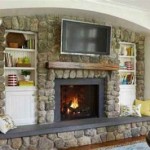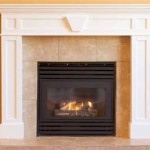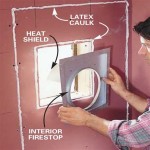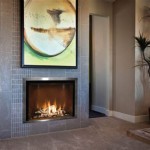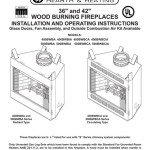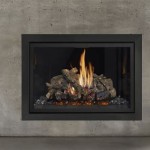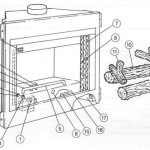Brass Fireplace Insert: Aesthetics, Functionality, and Considerations
A brass fireplace insert represents a significant investment in both the aesthetic appeal and the functional efficiency of a fireplace. These inserts are designed to fit within an existing fireplace opening, offering a variety of benefits ranging from enhanced heating capabilities to an updated look that blends traditional warmth with modern design sensibilities. Understanding the different aspects of brass fireplace inserts, including their types, advantages, maintenance requirements, and installation considerations, is crucial for making an informed decision.
The term "brass fireplace insert" can encompass several different meanings. It could refer to an entire fireplace insert crafted predominantly from brass, or it could describe an insert with brass accents or trim. Furthermore, the insert itself can be either decorative, purely for aesthetic purposes, or functional, designed to burn wood, gas, or other fuel sources to provide supplemental heat. The specific construction and intended use will heavily influence the material composition, design features, and overall cost.
Choosing a brass fireplace insert involves considering many factors, including the existing fireplace's dimensions, the desired heating output, the homeowner's aesthetic preferences, and the overall budget. Careful evaluation of these elements is necessary to ensure a satisfactory outcome.
Aesthetic Considerations: Design and Style
Brass, with its inherent warmth and luster, has long been a favored material for decorative elements. In the context of fireplace inserts, brass accents or entirely brass-faced inserts can significantly enhance the visual appeal of a fireplace. The reflective properties of brass can brighten a room and add a touch of elegance and sophistication.
Brass inserts are available in a range of styles, from traditional designs with intricate detailing to more contemporary, minimalist appearances. Some inserts feature ornate brass trim surrounding the firebox, while others may have brass doors or brass accents integrated into the overall design. The choice of style should complement the existing décor of the room and reflect the homeowner's personal preferences.
The finish of the brass is another important consideration. Polished brass offers a bright, reflective surface, while antique brass has a darker, more subdued appearance. Brushed brass provides a softer, more matte finish. Each finish contributes a different ambiance to the room, and the selection should be based on the desired aesthetic effect.
Beyond the overall style and finish, specific design elements can further customize the look of a brass fireplace insert. These elements may include decorative patterns etched into the brass, intricate castings, or the incorporation of other materials, such as glass or stone, to create a unique and visually appealing focal point.
Matching the brass insert with other brass or metallic accents in the room is crucial for achieving a cohesive and harmonious design. Pay attention to the color and finish of existing hardware, lighting fixtures, and decorative items to ensure a seamless integration of the fireplace insert into the overall aesthetic. Consider the undertones of the brass and how they interact with the colors in the room. A warm, yellow-toned brass may complement warmer color palettes, while a cooler, more silvery brass may be better suited to cooler color schemes.
Functional Aspects: Heating Efficiency and Types of Inserts
While aesthetics are a primary consideration for many homeowners, the functional performance of a fireplace insert is equally important. Modern fireplace inserts are designed to significantly improve the heating efficiency of a traditional fireplace, which can be notoriously inefficient.
Traditional open fireplaces lose a significant amount of heat up the chimney. Fireplace inserts, on the other hand, are sealed units that are designed to radiate heat into the room. They also prevent cold air from entering the house through the chimney when the fireplace is not in use. This enhanced efficiency can result in substantial energy savings and a more comfortable living environment.
Brass fireplace inserts are available in various types, each with its own advantages and disadvantages: wood-burning, gas-burning, and electric.
Wood-burning inserts offer the appeal of a traditional wood fire, providing a realistic flame and the characteristic crackling sound. They typically require a chimney liner to ensure safe and efficient venting of the combustion gases. Wood-burning inserts can be highly efficient, but they also require regular maintenance, including cleaning the chimney and removing ashes.
Gas-burning inserts offer convenience and ease of use. They can be operated with a switch or remote control and require minimal maintenance. Gas inserts are available in both natural gas and propane models, and they also require proper venting. They typically provide a consistent and controllable heat output.
Electric fireplace inserts are the easiest to install and operate. They do not require venting and can be plugged into a standard electrical outlet. Electric inserts provide supplemental heat and a realistic flame effect, but they do not offer the same level of heat output as wood or gas inserts. They are a good option for homeowners who primarily desire the aesthetic appeal of a fireplace without the need for significant heating capabilities.
When selecting a functional brass fireplace insert, it is essential to consider the heating output, measured in British Thermal Units (BTUs). The appropriate BTU rating will depend on the size of the room and the desired level of supplemental heat. Consulting with a qualified professional is recommended to determine the optimal BTU rating for a specific application.
Beyond the type of fuel used, the construction and design of the insert itself play a significant role in its heating efficiency. Features such as a cast-iron firebox, a blower fan, and a heat exchanger can all contribute to improved heat output and distribution. Look for inserts with high efficiency ratings and features that maximize heat transfer to the room.
Installation, Maintenance, and Safety Considerations
Proper installation is crucial for the safe and efficient operation of any fireplace insert. It is strongly recommended to hire a qualified professional to install a brass fireplace insert, particularly for wood-burning and gas-burning models. Professional installation ensures that the insert is properly vented, connected to the fuel source, and meets all applicable building codes and safety standards.
Wood-burning inserts require the installation of a chimney liner, which is a metal pipe that runs the length of the chimney. The liner protects the chimney from the corrosive effects of combustion gases and ensures proper venting. Gas-burning inserts also require venting, which may involve a direct vent system or a conventional chimney liner.
Electrical inserts, while easier to install, should still be installed according to the manufacturer's instructions. It is important to ensure that the electrical outlet is properly grounded and that the circuit can handle the electrical load of the insert.
Regular maintenance is essential for keeping a brass fireplace insert in good working order. Wood-burning inserts require regular cleaning of the chimney to remove creosote buildup, which is a flammable substance that can cause chimney fires. Gas-burning inserts should be inspected annually by a qualified technician to ensure that all components are functioning properly.
The brass components of the insert will also require occasional cleaning and polishing to maintain their luster. Use a brass cleaner specifically designed for fireplace inserts, and follow the manufacturer's instructions carefully. Avoid using abrasive cleaners, which can scratch or damage the brass finish.
Safety is paramount when operating any fireplace insert. Always follow the manufacturer's instructions and never leave a fire unattended. Install smoke detectors and carbon monoxide detectors in the vicinity of the fireplace to provide early warning of any potential hazards. Ensure that the fireplace is properly ventilated and that there are no flammable materials nearby.
When burning wood in a wood-burning insert, use only seasoned, dry wood. Wet or green wood produces more smoke and creosote, which can increase the risk of chimney fires. Store firewood away from the fireplace to prevent accidental ignition.
Teach all members of the household, especially children, about fireplace safety. Emphasize the dangers of playing near the fire and the importance of never touching the hot surfaces of the insert. Keep a fire extinguisher nearby and know how to use it in case of a fire.
Fireplace inserts, particularly gas and wood burning models, generate significant heat. It is vital to maintain a safe distance from the insert while it is in operation and to avoid touching any of the hot surfaces. Consider using a fireplace screen or guard to prevent accidental contact with the flames or hot components.
By carefully considering these installation, maintenance, and safety considerations, homeowners can enjoy the beauty and warmth of a brass fireplace insert while ensuring the safety and well-being of their families.

How To Spray Paint A Brass Fireplace Insert Erfly House

How To Spray Paint A Brass Fireplace Insert Erfly House

How To Update Brass Fireplace Insert With Spray Paint Iekel Road Home

How To Spray Paint A Brass Fireplace Insert Inserts White Wash Brick

Brass Fireplace Update East Coast Creative

How To Paint Metal Fireplace Surround Four Generations One Roof

How To Spray Paint A Brass Fireplace Insert Erfly House

French Brass Fireplace Insert Alberto S Antiques

How To Update Brass Fireplace Insert With Spray Paint Iekel Road Home

Rare Antique Fireplace Tools Brass Over Cast Iron Pick Solid Heavy Base Israel
Related Posts

